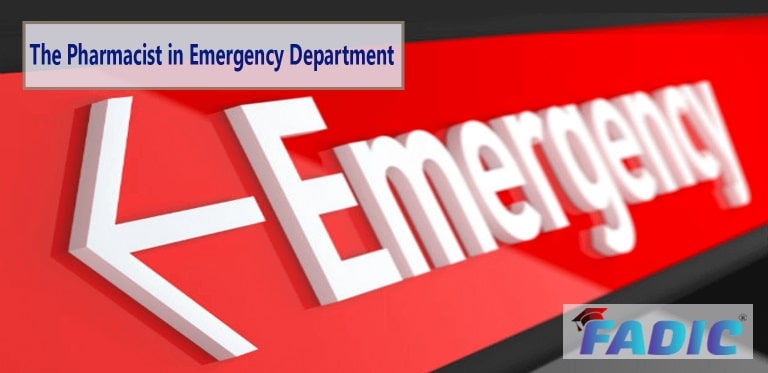The 8 Roles of Pharmacist in Emergency Department
The 8 Roles of Pharmacist in Emergency Department

Emergency medicine (EM) is an ever-changing and rapidly evolving practice.
Moreover, the role of the pharmacist is really important in ER.
Essential Direct Patient Care Roles of Pharmacist in ED
The essential roles of pharmacists include:
- Optimising medication use through participation in direct patient care rounds.
- Besides, medication order review, medication therapy monitoring.
- In addition to, participation in procedures that utilise high-risk medications, resuscitation.
- Moreover, the pharmacist has a role in medication procurement and preparation, provision of medication information, and documentation of associated interventions.
1. Direct Patient Care Rounds.
- Firstly, because the large majority of medication errors occur in the prescribing and administration phases of the medication-use process.
- Moreover, it is critical for pharmacists to be involved in direct patient care activities.
2. Medication Order Review.
- Secondly, medication order review in the ED must comply with federal, state, and local regulations and accreditation requirements.
3. Medication Therapy Monitoring.
- Thirdly, the development and assessment of monitoring parameters related to medication therapy are essential steps in the medication-use process.
4. Patient Care Involving High-Risk Medications and Procedures.
- A number of high-risk medications and procedures are utilised in the ED.
5. Resuscitation.
- Pharmacists should be present during all resuscitations in the ED.
6. Medication Procurement and Preparation.
- Medication procurement in the ED presents challenges that differ significantly from those in other areas of the hospital.
7. Medication Information.
- The most common cause of medication errors is a lack of information related to medication therapy.
8. Documentation.
- Research on pharmacist interventions in the inpatient setting has demonstrated improvement in patient outcomes through optimised pharmacotherapy regimens.
- Additionally, improved monitoring of medication therapy. In addition to, avoidance of adverse medication events.

In Conclusion,
- Pharmacist provides many vital services to the ED.
- Additionally, the central role of the pharmacist is to improve patient outcomes by improving patient safety, preventing medication errors.
- Moreover, providing optimised pharmacotherapy regimens and therapeutic outcomes through participation in direct patient care activities.
- Furthermore, adapting quality-improvement initiatives in the ED.
- Finally, pharmacists can provide education to members of the pharmacy department and other health care providers, as well as patients and their caregivers.
- In addition to, participate in research and scholarly activities in the ED.
Read More:
- Antimicrobial Stewardship School
- Sepsis Training Program
- Download Pocket Guide for Antibiotic Pharmacotherapy Book
- Microbiology Course | ABC Bacteria
- Infectious Disease E-News | FREE Subscription
- ABC antimicrobials | Know all about the Antimicrobials
- Road Map to Antimicrobial Stewardship Training Program
- Register Now in FADIC Clinical Research School
- Moreover, FADIC Drug Information Fellowship
- Buy FADIC Toolkit for Writing Research to Write a Great Research Paper
- Read 10 Skills You Must Learn to Make a Research via Google Scholar in Arabic
- The FADIC Online Continuous Medical Improvement Programs & Mini-Courses.
- Check Now FADIC Book store and Buy books in different specialties.
- Watch Now FADIC TV to Keep your self Updated.
- FADIC Podcast focusing on varieties of pharmacist perspectives in different specialties.
- Subscribe Now in FADIC 2020 Daily News (FNN) and Keep Updated.
- Check Now about Coronavirus Resource Information Center.

 Log in
Log in Sign up
Sign up